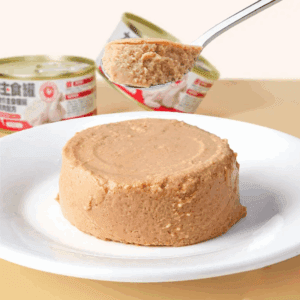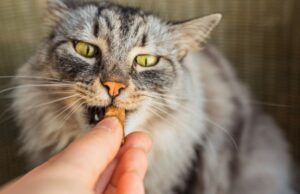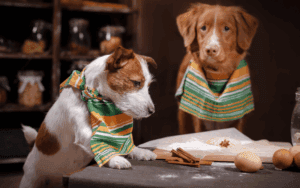Meta Description
Discover how private label cat wet food can boost your pet business, attract discerning cat owners, and align with consumer trends in this in-depth, market-savvy guide for wholesalers.
Private label cat wet food has surged in popularity over the last few years, creating a profitable avenue for pet-focused businesses looking to diversify their product offerings. Whether you are an online seller, a major supermarket buyer, or an OEM/ODM customer with a custom formula in mind, the growing demand for high-quality cat food makes this niche an excellent target. In this article, we will take an in-depth look at the private label cat wet food market, examine real-time industry data, highlight consumer preferences, and walk you through the key steps to launching your own cat wet food line. Along the way, we will also share insights on relevant keywords—like wholesale pet treats, wholesale dog treats, wholesale cat treats, private label pet treats, and white label dog treats—to help you develop a more comprehensive product portfolio. Ready to dive in? Let’s explore the possibilities and potential profits that come with private label cat wet food.
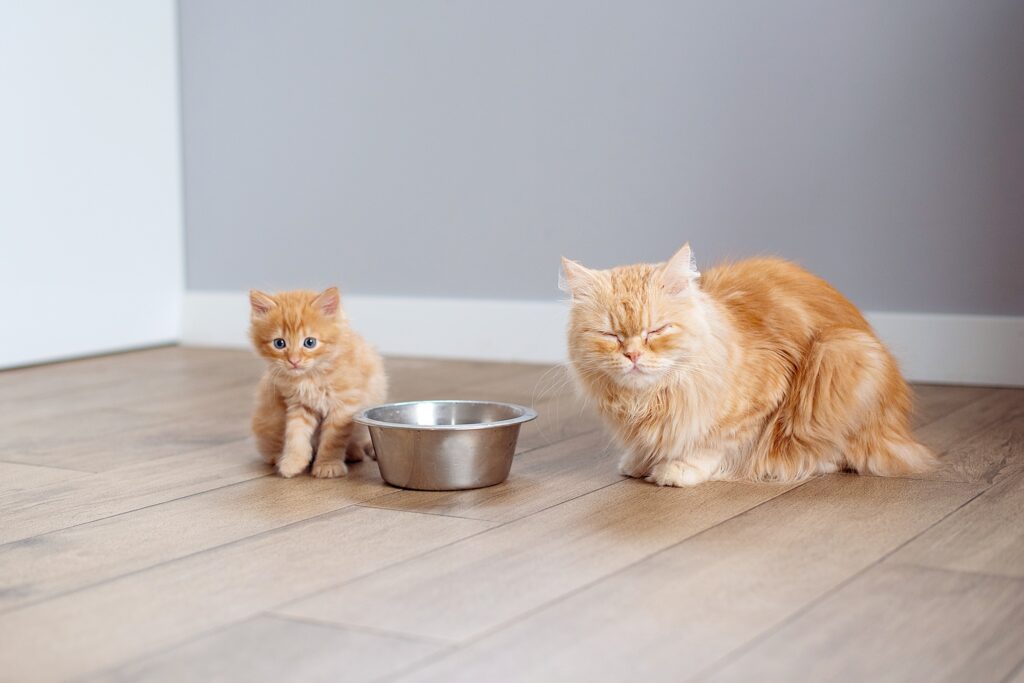
1. Understanding Private Label Cat Wet Food
Private labeling means you, as a business, partner with a manufacturer to produce cat wet food that carries your brand name. This approach not only reduces the complexities of developing your own manufacturing facilities but also allows you to customize product formulations and packaging. When a retailer, wholesaler, or online marketplace offers private label cat wet food, they gain flexibility in pricing, positioning, and branding strategies.
Many pet-oriented businesses now see private label products as a way to differentiate themselves in a crowded market. The freedom to set unique brand messaging, packaging design, and ingredient sourcing criteria is invaluable—especially when you want to tailor products to specific customer demographics.
Additionally, a private label arrangement offers:
- Economies of scale: By partnering with an established manufacturer, you can often take advantage of their large-scale production capabilities.
- Speed to market: Formulations might already be proven, so bringing a new product to market can happen much faster than starting from scratch.
- Consistent supply: Established manufacturers typically have reliable sourcing channels, ensuring minimal disruptions in production.

2. Why Cat Owners are Flocking to Wet Food Options
Cat owners have become increasingly conscious about the nutritional value of the food they give their feline friends. Wet food, known for its high moisture content, appeals to pet owners looking to keep their cats hydrated and well-nourished. Below are some major reasons why consumers gravitate toward wet food:
- Hydration: Many cats do not drink as much water as dogs do. A high-moisture diet helps maintain proper hydration and urinary tract health.
- Palatability: The texture, aroma, and taste of wet food often make it more appealing than dry kibble.
- High Protein Content: Premium wet cat foods often feature quality protein sources, satisfying a cat’s natural carnivorous instincts.
- Variety of Formulas: There are multiple recipe options—grain-free, limited ingredient, and specialized diets—allowing owners to pick something that fits a cat’s unique needs.
By offering a private label cat wet food that focuses on these features, you cater to buyers who want only the best for their pets. When combined with your existing or future range of wholesale cat treats or wholesale dog treats, you can cover more ground and meet a wide spectrum of customer demands.

3. Real-Time Market Data and Growth Trends
According to various industry reports and market trackers, the global cat food market has been steadily increasing and is projected to see continued growth through 2025 and beyond. Wet food, in particular, has been capturing a larger share of the overall cat food segment year by year. Here are some representative data points that underscore the sector’s vitality (note that these figures are updated estimates, reflective of ongoing industry tracking):
- Global Market Valuation: The global cat food market has surpassed $42 billion in overall value, with wet food holding roughly 40–45% of the market share.
- Projected Growth: Analysts predict a CAGR (Compound Annual Growth Rate) of approximately 6–7% for the cat wet food category through 2026, making it one of the faster-growing segments in the pet industry.
- Rising Premium Segment: More than 65% of new cat wet food launches focus on premium or specialized diets (high-protein, organic, and human-grade).

As you consider diving into the private label cat wet food space, these figures demonstrate a clear upward trajectory. With the proper branding and a reliable manufacturing partner, you can carve out a niche that caters to health-conscious pet owners.
4. Key Benefits of Offering Private Label Cat Wet Food
- Brand Differentiation: Introducing a cat wet food line under your own brand can set you apart from competitors who primarily carry established names.
- Customer Loyalty: Once a pet owner’s cat takes to your product, they are more likely to remain loyal to your brand—cats and their humans can be creatures of habit.
- Higher Margins: Private label products generally yield higher profit margins because you control pricing more effectively.
- Versatility: You can expand your line to include specialized recipes—such as grain-free, low-allergen, and even novel proteins (like duck or rabbit)—depending on consumer trends.
- Cross-Selling Opportunities: If you already offer wholesale pet treats, white label dog treats, or private label pet treats, a cat wet food line can complete the circle, allowing you to meet diverse pet owner needs under one brand umbrella.
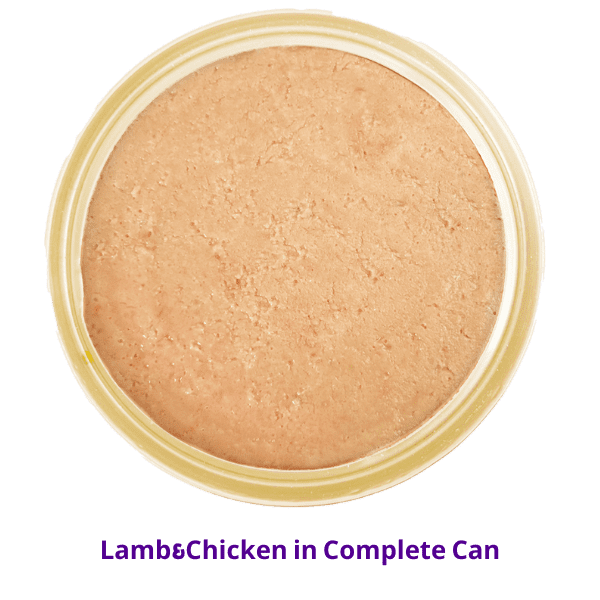
5. Crucial Considerations for Your Private Label
Before you jump in, keep the following points in mind:
- Ingredient Transparency: Modern pet owners are label-readers. Work with a manufacturer that sources high-quality, transparent ingredients.
- Regulatory Compliance: Ensure your cat wet food formula meets local and international guidelines, such as those set by the Association of American Feed Control Officials (AAFCO) in the U.S.
- Packaging: Your packaging should be convenient (e.g., single-serve pouches or easy-open cans) and aligned with your brand’s aesthetic.
- Shelf Stability: Consult your manufacturer on shelf-life tests and proper canning or retort processes to ensure product safety.
- Price Positioning: Decide if you want to target the premium or budget segment. This choice will affect your ingredient selection and packaging style.
- Market Research: Identify gaps in the existing cat wet food offerings—are there novel flavors or nutrient profiles in demand that aren’t yet widely available?
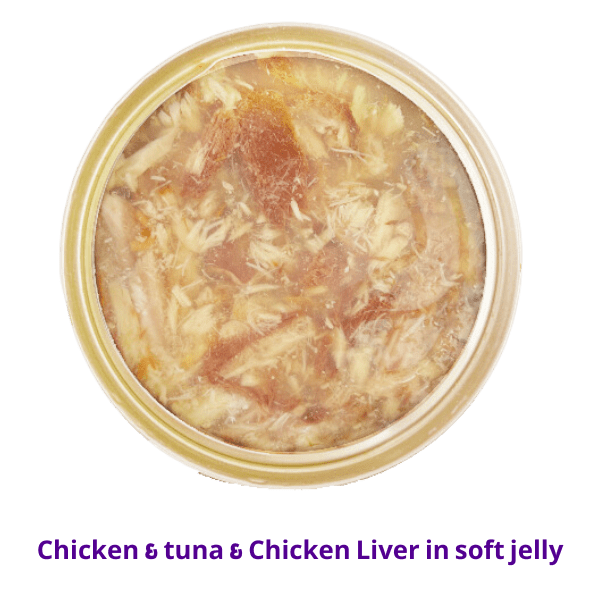
6. How to Launch Your Own Private Label Cat Wet Food
Let’s break the process down step by step:
Step 1: Conduct Thorough Market Research
- Identify top-selling cat wet food varieties in your region or target markets.
- Evaluate pricing, flavor profiles, and ingredient stories that resonate with cat owners.
Step 2: Find a Reliable Manufacturer
- Look for an experienced pet food producer that has expertise in creating private label pet treats as well as wet cat food.
- Check their certifications—such as Good Manufacturing Practices (GMP)—and request references from other clients if available.
Step 3: Develop the Product Formulation
- Work with the manufacturer’s nutrition experts to finalize your ingredient list, taking care to balance protein, moisture, vitamins, and minerals.
- Aim for clarity on the source of proteins: Many consumers prefer human-grade or free-range claims.
- If possible, include functional ingredients (e.g., cranberries for urinary health, Omega-3 fats for a shiny coat).
Step 4: Packaging and Branding
- Decide on the packaging format: Pouches, foil trays, or cans.
- Create a label design that highlights key product attributes (e.g., “grain-free,” “all-natural”) and includes your brand logo prominently.
- Make sure to comply with labeling regulations in your target market.
- Keep your brand theme consistent across other products like wholesale dog treats or white label dog treats to reinforce brand recognition.
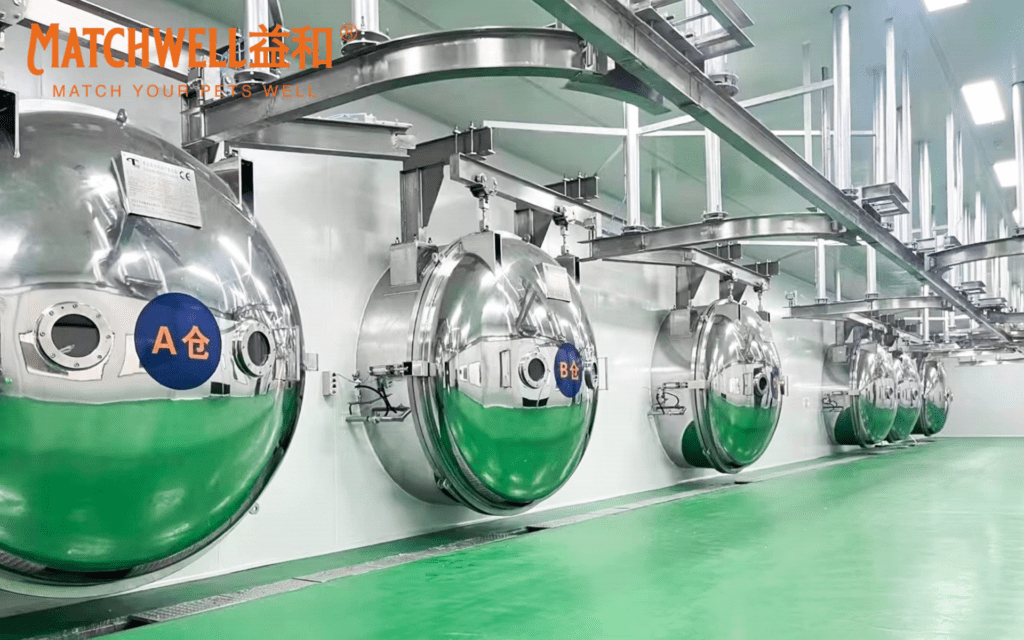
Step 5: Compliance and Testing
- Conduct stability and palatability tests.
- Ensure the product meets AAFCO guidelines or relevant local regulations for nutritional adequacy.
- Seek additional quality certifications or endorsements if you aim for the premium segment (e.g., organic certifications).
Step 6: Launch and Promotion
- Time your launch with relevant events (like National Cat Day or a major pet trade show).
- Offer promotional deals or small free samples to encourage consumer trials.
- Collaborate with influential pet bloggers or social media influencers to reach dedicated cat communities online.
7. Ensuring Quality Control and Compliance
Quality control is paramount in pet food production. Even minor mistakes in formulation or packaging can lead to product recalls and reputational damage. Here’s how you can mitigate risks:
- Regular Audits: Schedule regular inspections of your manufacturing partner’s facilities.
- Ingredient Testing: Request certifications that outline the origin and purity of proteins and other major ingredients.
- Traceability Systems: Keep a traceability record for each batch of product, making it easy to locate issues if a recall becomes necessary.
- Third-Party Lab Testing: Partner with independent labs to verify nutritional content and screen for contaminants.
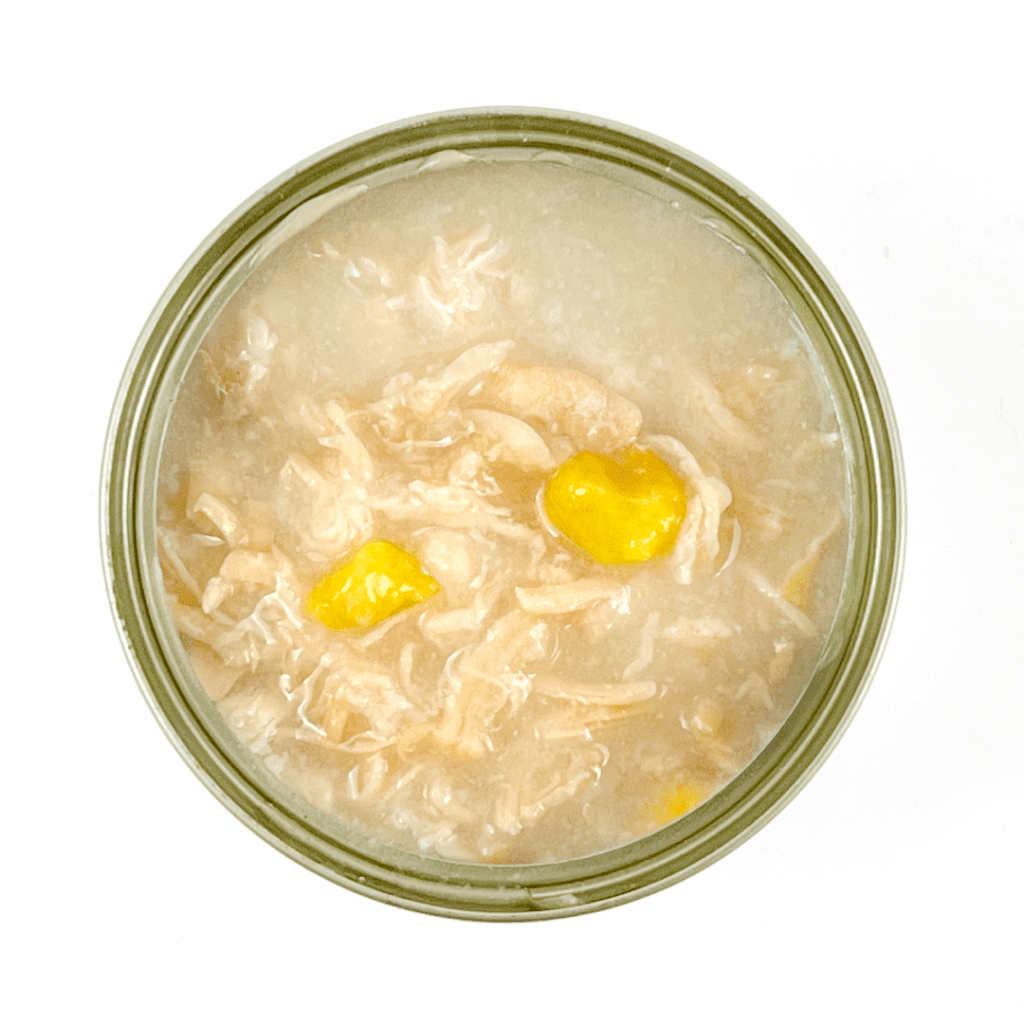
Staying on top of these procedures reassures both retailers and end consumers that your cat wet food is safe, nutritious, and worth their investment.
8. Marketing and Distribution Strategies
Once your private label cat wet food is finalized, it’s time to ensure it lands in the right hands—namely, cat owners searching for premium, reliable products. Effective marketing and distribution can make or break your brand in a crowded marketplace.
8.1 Online Channels
- E-commerce Marketplaces: Platforms like Amazon, Chewy, and Walmart’s online store can quickly provide massive visibility.
- Your Website: Highlight your cat wet food on your official site. If you already sell wholesale pet treats, cross-promote those with your new product.
- SEO and Content Marketing: Publish blog posts, buyer’s guides, and comparison articles to target relevant keywords such as “high-protein cat wet food” or “best private label cat food.”
- Social Media: Showcase behind-the-scenes footage of the product creation process, share user-generated content, and run interactive campaigns (e.g., monthly photo contests for cat owners).
8.2 Offline Channels
- Retail Partnerships: Approach major supermarkets and local pet boutiques to stock your product. Provide them with promotional materials and training to help staff explain the benefits to customers.
- Trade Shows: Participate in major pet industry expos to connect with distributors, retailers, and potential OEM/ODM partners.
- Sampling Stations: Offering product samples in pet stores or at events gives potential buyers the chance to see how their cats react before committing to a purchase.
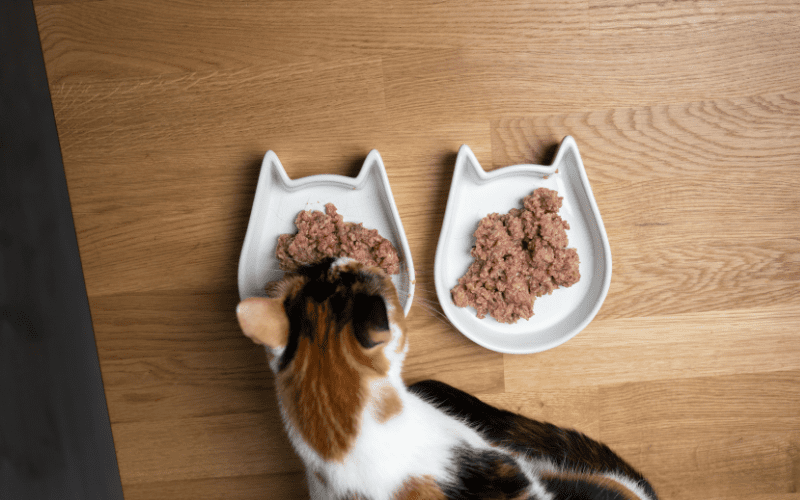
8.3 Leveraging Your Brand Ecosystem
If your brand already spans dog treats (e.g., wholesale dog treats, white label dog treats) or cat treats (e.g., private label pet treats), cross-selling becomes a potent tactic. Bundle cat wet food with cat treats or create a “starter kit” for new pet owners featuring multiple products from your brand. This holistic approach can boost overall sales and brand loyalty.
9. Expanding Your Product Line Beyond Wet Food
Once you have a successful private label cat wet food line, you may consider broadening your range to address other pet care needs. These offerings could include:
- Dry Cat Food: While wet food is on the rise, dry kibble still occupies a significant share of the cat food market.
- Functional Treats: If you already handle wholesale pet treats, consider specialized cat treats designed for dental health, hairball control, or weight management.
- Gourmet Options: Premium, small-batch recipes with novel proteins like venison or quail cater to pet owners looking for something truly special.
- Cat Supplements: Supplements—like vitamins, probiotics, or omega-3 chews—are increasingly popular among pet parents who want to optimize their cats’ well-being.
By tapping into these complementary niches, you can continue to serve your customers’ needs as their go-to pet brand, potentially increasing lifetime customer value.

10. Conclusion: Time to Capitalize on Cat Wet Food Demand
Private label cat wet food offers an exciting market opportunity for pet treats manufacturers, wholesalers, and OEM/ODM customers aiming to broaden their portfolios. By partnering with an established manufacturer and adhering to best practices in product formulation, packaging, compliance, and marketing, you can set yourself apart in a market hungry for innovative and trustworthy cat food. When coupled with other offerings—such as wholesale pet treats, wholesale dog treats, or white label dog treats—your private label cat wet food can form the backbone of a diverse, profitable product range that resonates with today’s discerning pet owners.
Remember, success in this industry is not just about having a compelling product; it’s about consistently meeting evolving consumer expectations. Stay alert to real-time market data, be transparent about your ingredients, and don’t shy away from investing in quality control. Cat owners are increasingly willing to pay a premium for products that promise nutritional benefits and robust quality assurances.
Looking for a trusted partner to bring your private label cat wet food vision to life? Visit matchwellpets.com today. As a seasoned pet treats manufacturer, Matchwell can guide you through each step—from concept to launch—to ensure your brand stands out and thrives in a competitive marketplace. Start creating the wet cat food line that captures the hearts (and taste buds) of discerning cats and cat owners everywhere.
References / Resources for Further Reading
- American Pet Products Association (APPA). 2023–2024 National Pet Owners Survey.
- NielsenIQ Pet Industry Sales Tracker. Real-time purchase and trend data for cat and dog products.
- Association of American Feed Control Officials (AAFCO). Official Publication.
- Market Research Future Reports on Pet Food Industry Growth (2023).

